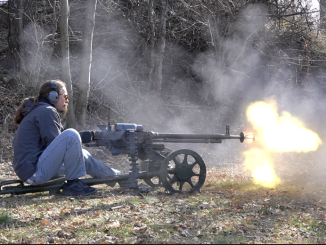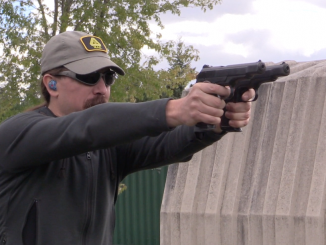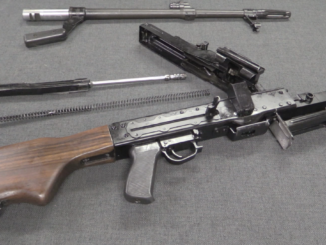We have an FN 1900 to look at today that was purchased by the Russian Imperial Army’s primary Gymnastics and Fencing School (Главная гимнастическо-фехтовальная школа). That was an institution established in 1909 to train officers who would become fencing and gymnastics instructors for the Army at large.
Russian officers could carry private-purchase handguns from a list of approved designs, which included the FN 1900, 1903, and 1905. A bunch of Army schools and institutions bought batches of FN pistols between 1907 and 1914 for resale to officers. These will often, but not always, be marked with a crossed pair of Mosin Nagant rifles.
There was no formal adoption of the FN 1900 by Russia, and so there was no large Army order specifying that crossed-rifle marking. Instead, small contracts were made by institutions, who could make their own choices about how the guns would be marked.
One of the interesting and distinctive elements about these Russian purchases is that while some of their guns were blued, a significant number were ordered with a factory nickel-plated finish, which is rare on FN pistols. This example shows very nicely how FN left a few small parts (magazine release, trigger, safety) in a black primed state instead of plating them. It had been found that when those parts were plated, the change in surface thickness could cause fitting problems.
Thanks to Max Popenker for the marking assistance, and to Legacy Collectibles for the loan of the pistol!




If I’d been a Russian officer of this era I would gladly have bought a 1900 Browning rather than use the 1895 Nagant. Quite why the Russians fell for a gate loading revolver as late as 1895 is one of life’s mysteries. I would not be too surprised if kickbacks were involved.
“(…)why the Russians fell for a gate loading revolver as late as 1895(…)”
Russians implicitly required new revolver to be one-by-one revolver (even or maybe because earlier revolver – S&W No. 3 was of “all-at-one-time” type), reasoning that
Fired cases must be individually extracted (that is, not automatically or simultaneously). The members of the commission decided that “the necessity for repeated reloading of the revolver while in use in close proximity to a pressing enemy would only occur in isolated instances, undoubtedly, it would be a complicated and heavy revolver. The price of manufacture for such a revolver would be higher and information on revolvers of reduced caliber obtained by the commission in the period of 1888 – 1892 from various other countries, that did not use automatic (simultaneous) extraction showed satisfactory results.”
quote from: http://www.russianrevolvers.com/n_Belg1910.html
Daweo:
Thank you for that interesting information. Now my question would be why any Russian commission could come up with such a retarded position? Could it be that having decided on the Nagant pistol they had to justify their position ex post facto? In which case, I would come back to my position of wondering if any money changed hands to grease this transaction? It happened then, and it still happens now.
“why any Russian commission could come up with such a retarded position?”(С)
Because both then and now, any decision made independently by one person or group is made based on the personal preferences of these same people.
And personal preferences are easily corrected through some …
gifts. 😉
Model 1900 should be the sole pistol thoroughly designed by J.M. Browning and manufactured by FN. This is easily recognisable through the lots of screw use and smaller grip plates than areas to be covered. Other FN models should be FN staffes and engineers made samples as constructed in rule of Browning’s patents…lMHO…
I noticed the loaded chamber indicator was in the “Loaded” position. I’m guessing it was not loaded and the indicator was broke. Hopefully.
That’s a cocking indicator.
This type of content makes me an avid watcher.
I’m in for Patreon buddy.
I would have liked to be a policeman in the 86~ in Russia.
I am a lover of old guns, that’s why I went to history college, here I love to study historical facts specifically related to war, besides I use https://essays.studymoose.com/research-paper-writing-service to procure research paper writing service, it helps me a lot to improve my knowledge and besides it gives me a lot of free time to pursue my favorite hobby, shooting.
very informative video, thanks